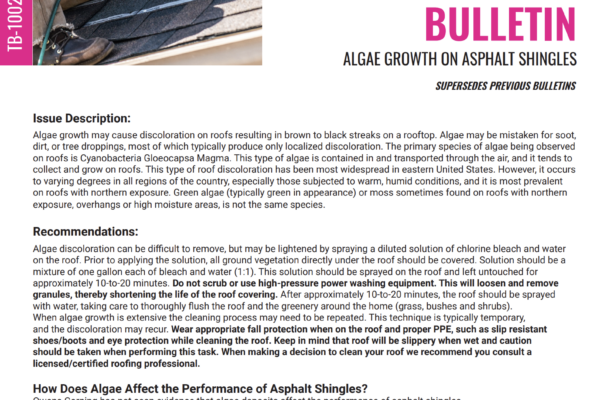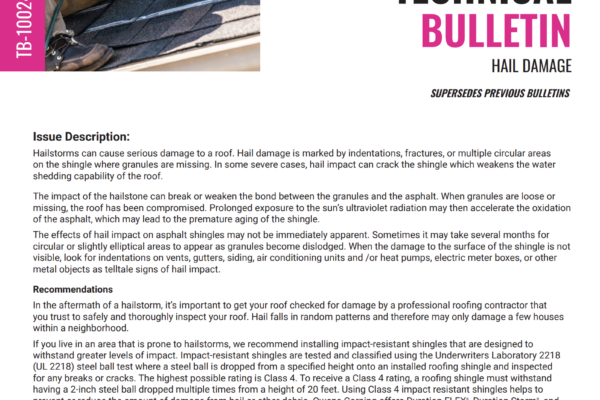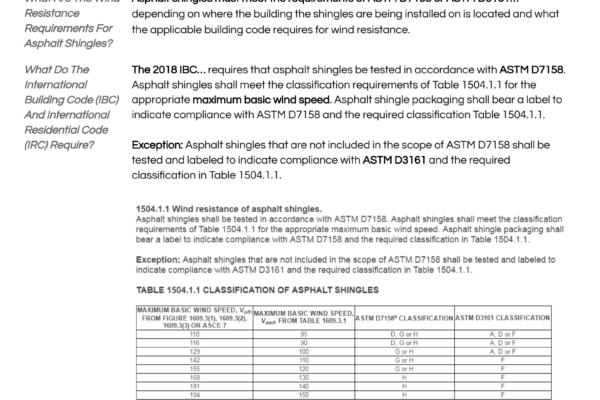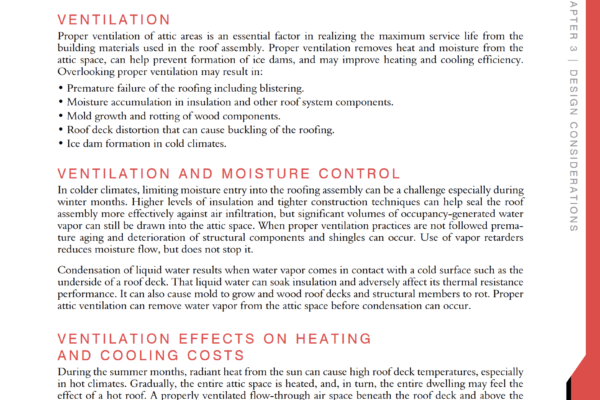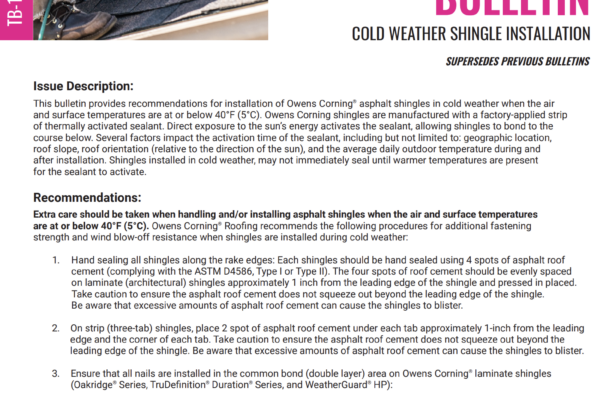
Cold Weather Shingle Installation: Best Practices and Recommendations
Understanding Cold Weather Shingle Installation Installing asphalt shingles in cold weather presents unique challenges. Owens Corning® shingles come with a factory-applied thermally activated sealant that requires direct exposure to the sun’s energy to bond properly. When the air and surface temperatures are at or below 40°F (5°C), this sealant may not activate immediately, affecting the…






